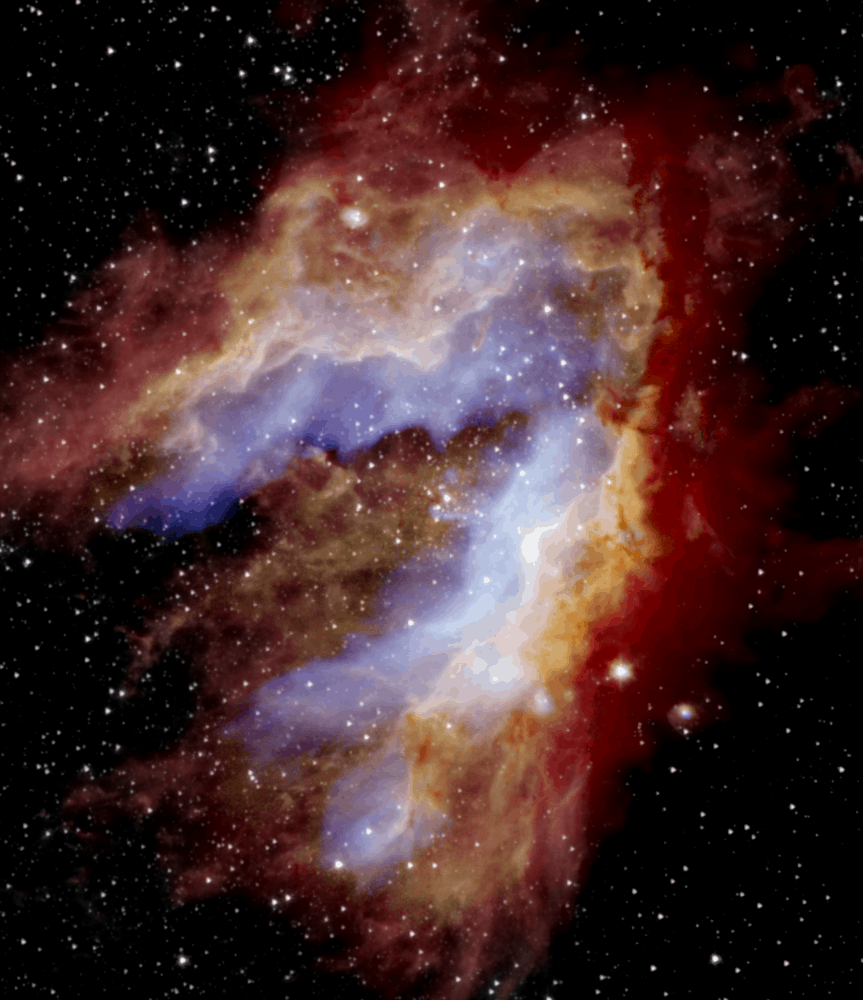The Cosmos with M17
One of the brightest and most massive star-forming regions in our galaxy, the Omega or Swan Nebula, came to resemble the shape resembling a swan’s neck we see today only relatively recently. New observations reveal that its regions formed separately over multiple eras of star birth. The new image from the Stratospheric Observatory for Infrared Astronomy, or SOFIA, is helping scientists chronicle the history and evolution of this well-studied nebula.
“The present-day nebula holds the secrets that reveal its past; we just need to be able to uncover them,” said Wanggi Lim, a Universities Space Research Association scientist at the SOFIA Science Center at NASA’s Ames Research Center in California’s Silicon Valley. “SOFIA lets us do this, so we can understand why the nebula looks the way it does today.”
Uncovering the nebula’s secrets is no simple task. It’s located more than 5,000 light years away in the constellation Sagittarius. Its center is filled with more than 100 of the galaxy’s most massive young stars. These stars may be many times the size of our Sun, but the youngest generations are forming deep in cocoons of dust and gas, where they are very difficult to see, even with space telescopes. Because the central region glows very brightly, the detectors on space telescopes were saturated at the wavelengths SOFIA studied, similar to an over-exposed photo. SOFIA’s infrared camera called FORCAST, the Faint Object Infrared Camera for the SOFIA Telescope, however, can pierce through these cocoons.
The new view reveals nine protostars, areas where the nebula’s clouds are collapsing and creating the first step in the birth of stars, that had not been seen before. Additionally, the team calculated the ages of the nebula’s different regions. They found that portions of the swan-like shape were not all created at the same time but took shape over multiple eras of star formation.
The central region is the oldest, most evolved and likely formed first. Next, the northern area formed, while the southern region is the youngest. Even though the northern area is older than the southern region, the radiation and stellar winds from previous generations of stars has disturbed the material there — preventing it from collapsing to form the next generation.
